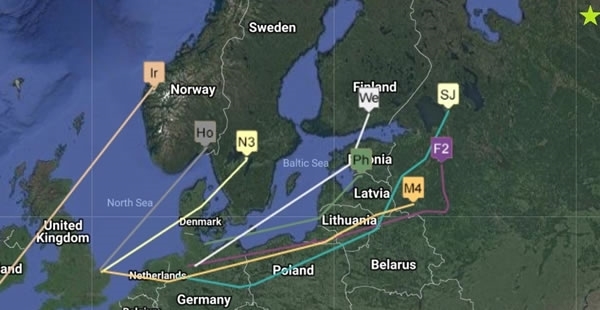
By Chris Heward, Wetlands Research Assistant
Most of the woodcock currently shown on the Woodcock Watch map were tagged in 2017 or earlier, meaning we have tracked them in previous years. Our satellite-tracking has shown that woodcock tend to be faithful to specific wintering sites and stop-overs and are especially faithful to their breeding sites.
Almost all the woodcock that we tracked in two or more years have returned to the same breeding site each spring. We guess these are site close to where the bird hatched as a chick – but without tagging youngsters at their ‘natal sites’ we cannot be certain of this.
Nellie III, Wensum, Fonthill Abbie II, Monkey IV, Irina and Sir John are all close to the breeding sites they visited in 2017, suggesting their migrations are over. All tags have transmitted recently and the birds appear to be settling down. They have all have been in the same location for a week or more.
An interesting exception is Phynodderee, who is nowhere near the site she visited last spring. She bred in Russia, further north and east than most of our woodcock, up in Arkhangelsk Oblast (shown by green star in map above). She’s currently still 1,200 km from this location, hanging around in Northern Latvia.
Typically stop-overs would only last for 1-7 days but she’s been in Latvia for just over two weeks now. Whilst it is still likely, at this point, that this is an unusually long stop-over, if remains in Latvia for the summer it will be a rare example of a tagged woodcock switching breeding sites.
Please support our vital woodcock research